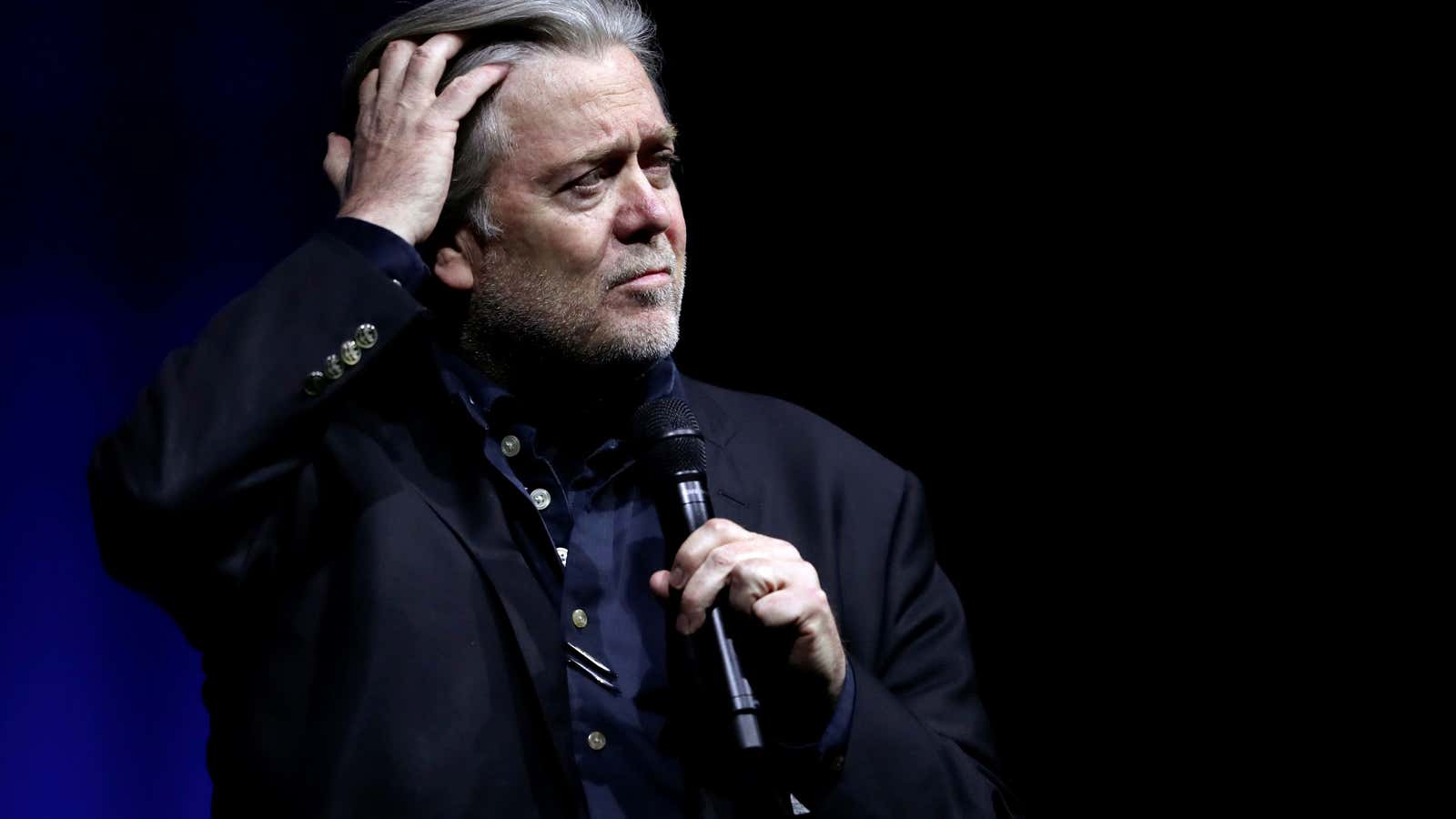On Monday (Sept. 3), the New Yorker announced that its annual festival of live events, taking place in October, would include an onstage interview of Steve Bannon by editor David Remnick. Backlash—on social media, from staff, and from other speakers—swiftly followed. By the afternoon, the magazine had rescinded Bannon’s invite.
The issue, it seems, is the blurry line between content produced by news organizations (i.e. journalism) and live events hosted by the same outlets.
“I’ve changed my mind. There is a better way to do this. Our writers have interviewed Steve Bannon for The New Yorker before, and if the opportunity presents itself I’ll interview him in a more traditionally journalistic setting as we first discussed, and not on stage,” Remnick wrote in a statement Monday. “The Festival is different, a different kind of forum.”
Interviews at live events work differently than those that appear in magazines, and not just because of the logistics. Events are one of the few places that public figures can exert some control over how they’re interviewed. By contrast, when a source is interviewed for a story, she has no say over who else is interviewed, what headline or images appear alongside the story, which quotes are used, what stories are adjacent, or even if the story or her quote runs at all.
Comedian John Mulaney was one of the first speakers to announce he would not participate in the New Yorker festival because of Bannon; Jimmy Fallon, Judd Apatow, and Patton Oswalt soon followed. Had an interview with Bannon been slated to appear in the same issue as an interview with any of those men, they would be hard-pressed to do anything about it. Likewise if Bannon had been a guest on a New Yorker podcast, which was the original plan before the magazine decided to bring him to the festival.
Public figures are increasingly sensitive to the optics of public appearances, especially when participation in a controversial event can seem to fans like a tacit endorsement of an organization or idea. That sensitivity is evident in the way speakers are refusing to participate in panels or attend conferences without a balance of women and people of color.
As Remnick acknowledges in his letter, the terms for speaking at a live event are also quite different than a traditional interview: Speakers might need to be housed, transported, and potentially even paid (which, in case it isn’t obvious, would be unethical for reported stories). In exchange for the time they’ve devoted to an event, speakers are made to feel safe and comfortable participating in it. That should make any attendee skeptical of what they see on stage.
